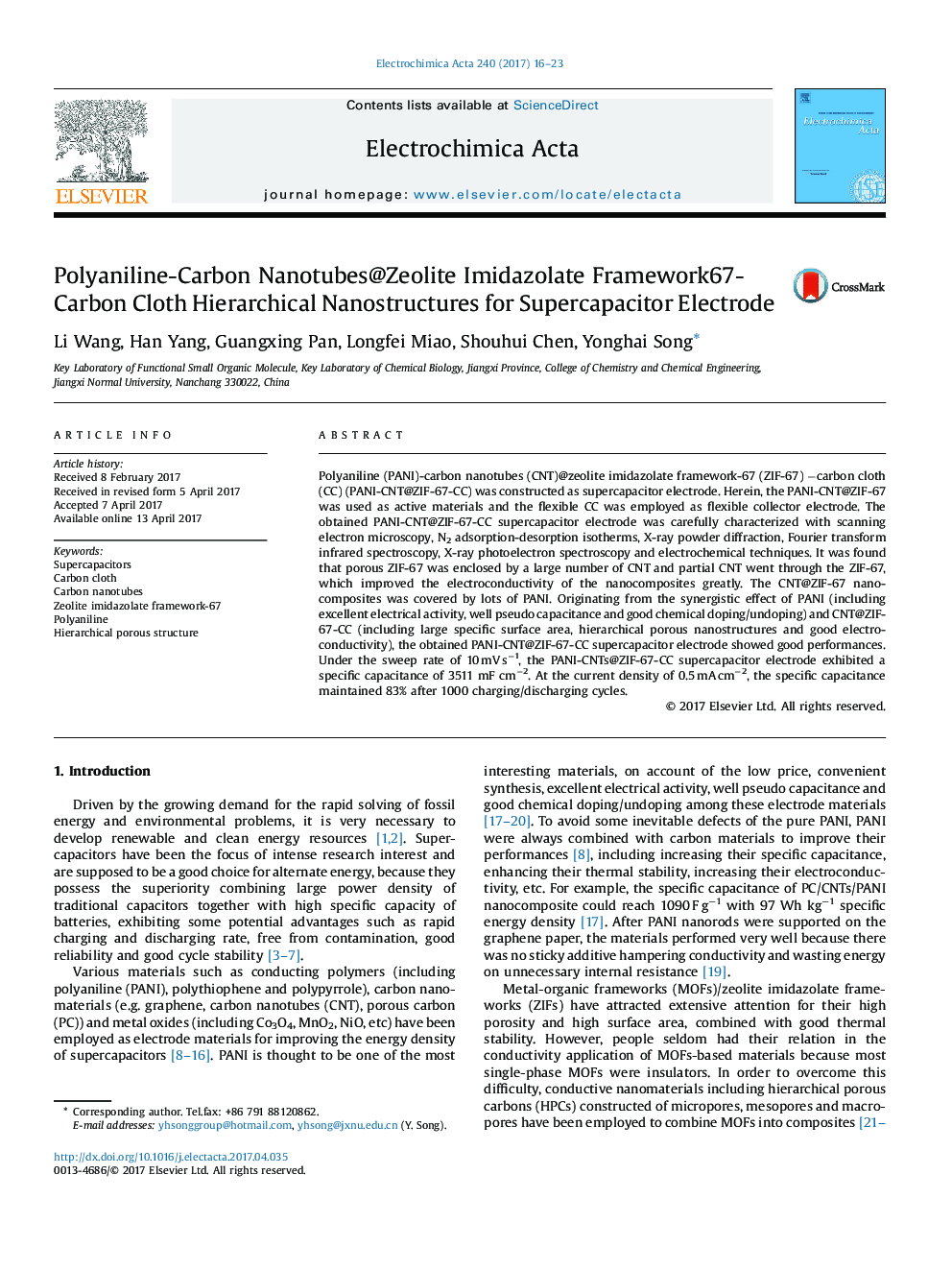| Article ID | Journal | Published Year | Pages | File Type |
|---|---|---|---|---|
| 6471244 | Electrochimica Acta | 2017 | 8 Pages |
â¢The flexible PANI-CNT@ZIF-67-CC with hierarchical porous structure was constructed.â¢The PANI-CNTs@ZIF-67-CC was used as supercapacitor electrode directly.â¢The PANI-CNTs@ZIF-67-CC showed high specific capacitance.â¢At 0.5 mA cmâ2, the specific capacitance maintained 83% after 1000 charging/discharging cycles.
Polyaniline (PANI)-carbon nanotubes (CNT)@zeolite imidazolate framework-67 (ZIF-67) âcarbon cloth (CC) (PANI-CNT@ZIF-67-CC) was constructed as supercapacitor electrode. Herein, the PANI-CNT@ZIF-67 was used as active materials and the flexible CC was employed as flexible collector electrode. The obtained PANI-CNT@ZIF-67-CC supercapacitor electrode was carefully characterized with scanning electron microscopy, N2 adsorption-desorption isotherms, X-ray powder diffraction, Fourier transform infrared spectroscopy, X-ray photoelectron spectroscopy and electrochemical techniques. It was found that porous ZIF-67 was enclosed by a large number of CNT and partial CNT went through the ZIF-67, which improved the electroconductivity of the nanocomposites greatly. The CNT@ZIF-67 nanocomposites was covered by lots of PANI. Originating from the synergistic effect of PANI (including excellent electrical activity, well pseudo capacitance and good chemical doping/undoping) and CNT@ZIF-67-CC (including large specific surface area, hierarchical porous nanostructures and good electroconductivity), the obtained PANI-CNT@ZIF-67-CC supercapacitor electrode showed good performances. Under the sweep rate of 10Â mVÂ sâ1, the PANI-CNTs@ZIF-67-CC supercapacitor electrode exhibited a specific capacitance of 3511 mF cmâ2. At the current density of 0.5Â mAÂ cmâ2, the specific capacitance maintained 83% after 1000 charging/discharging cycles.
Graphical abstractDownload high-res image (132KB)Download full-size image
